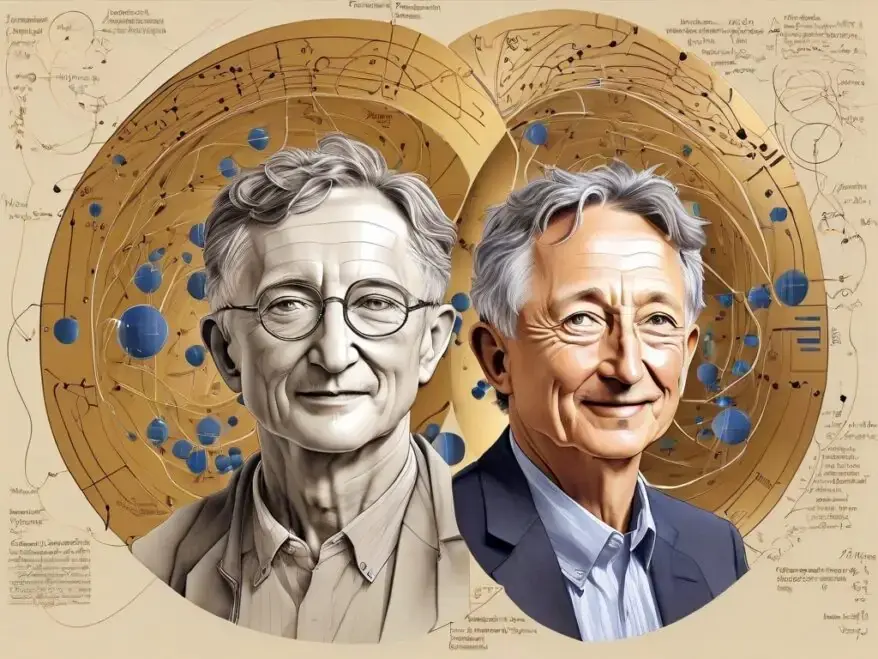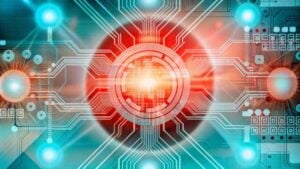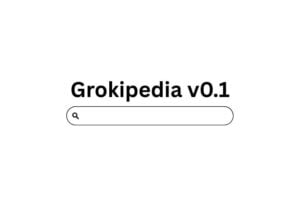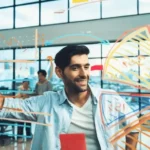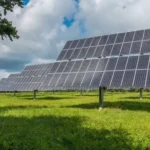Physics Nobel Prize 2024: Celebrating John Hopfield and Geoffrey Hinton
The Physics Nobel Prize 2024 is an impressive tribute to the transformative power of machine learning and artificial intelligence (AI) in the field of physics. This year, we highlight the outstanding prize given to two distinguished pioneers, John Hopfield and George Hinton. Their outstanding achievements have created the groundwork for breakthroughs in artificial neural networks, revolutionizing different applications across industries.
Physics Nobel Prize 2024 and Its Legacy
Alfred Nobel started the Nobel Prize in Physics. It is a highly respected award in the field of science. This prize honors people whose creative ideas have greatly helped humanity. The tradition of awarding continues in 2024. The honorees this year made significant discoveries in machine learning. Machine learning is a type of artificial intelligence that enables computers to learn from data. Their work has changed how we explore science and use technology.
Nobel’s goal was to reward people who make important progress in their fields. He wanted to encourage new areas to explore. John Hopfield and Geoffrey Hinton’s work shows this spirit. They combined ideas from neuroscience and physics. Neuroscience is the study of the brain and nervous system. Their methods are the foundation of modern artificial intelligence systems. This reflects the innovative spirit Alfred Nobel wanted.
Who Are the Esteemed Winners?
To understand the brilliance of John Hopfield and Geoffrey Hinton, we need to look at their backgrounds and how their groundbreaking work began. John Hopfield was born in Chicago. He is a respected professor at Princeton University. Geoffrey Hinton is a distinguished scholar. He works at the University of Toronto. Their academic journeys, marked by relentless curiosity, have driven the field of machine learning forward.
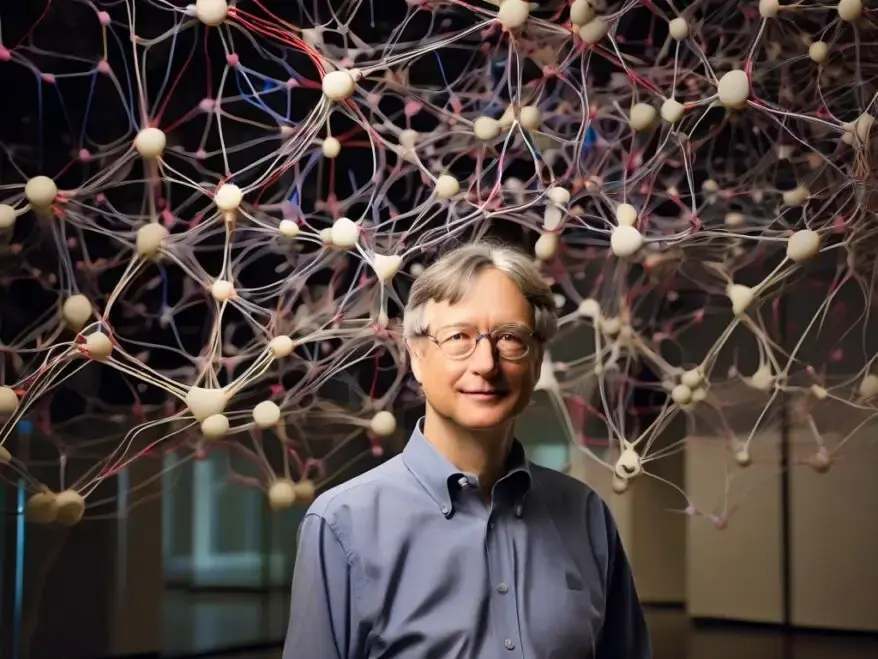
John Hopfield is famous for creating the Hopfield Network. This is a type of artificial neural network. It is designed to mimic how the human brain works. His research helped people understand how patterns and memories are stored and recalled. This research laid the foundation for more complex neural networks.
Geoffrey Hinton also made significant contributions. He introduced the Boltzmann machine. This was a major step forward. It improved artificial networks’ ability to recognize and process complex data patterns.
Their vision and determination have greatly benefited academic research. They have also led to practical applications in many industries. These developments suggest a future full of possibilities for breakthroughs driven by AI (Artificial Intelligence).
Understanding Neural Networks: A Peek into Their Genius
To truly appreciate the strides made by Hopfield and Hinton, it’s vital to understand the nature of artificial neural networks. These systems, inspired by the brain’s architecture, form the crux of machine learning and artificial intelligence. In these networks, individual units, called nodes, act much like neurons in the human brain, interlinked through connections similar to synapses.
John Hopfield’s contribution lies in his school’s conception of storing and retrieving information through the network’s energy landscape. By efficiently recalling distorted or incomplete images, Hopfield networks simulate a fundamental cognitive function, a testament to their elegance and utility.
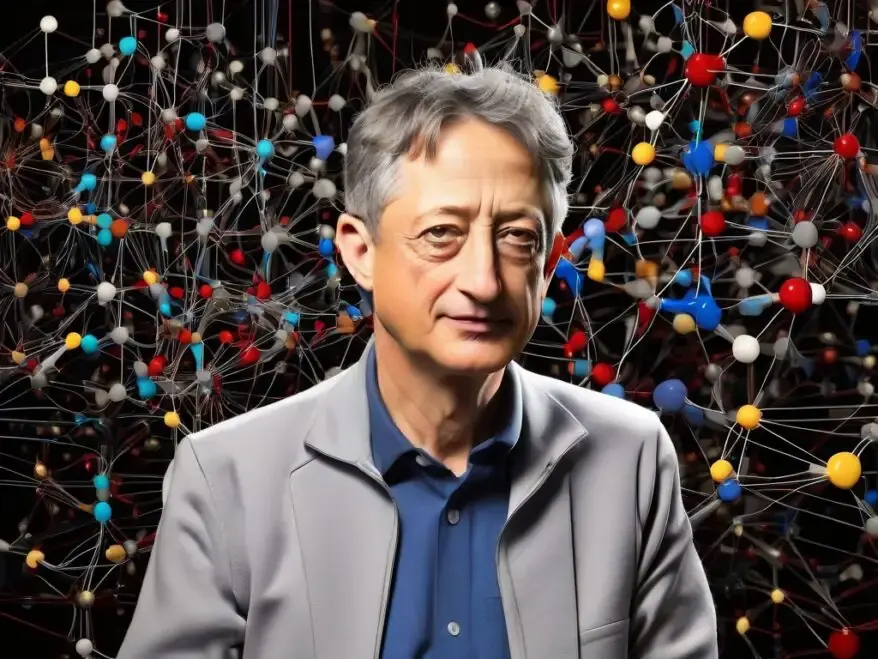
Geoffrey Hinton’s innovation, the Boltzmann machine, added another layer of complexity. It introduced the concept of hidden layers, allowing the network to create more abstract representations of data. This ability to uncover more in-depth insights into information marked a significant progression in AI’s analytical prowess, enabling it to tackle tasks previously thought impossible for machines.
The Practical Magic of Machine Learning
The work of Hopfield and Hinton has countless practical implications. Today, machine learning is a ubiquitous technology, shaping industries and everyday experiences alike. From recommending a movie to identifying faces in a crowd, the applications are numerous and growing rapidly.
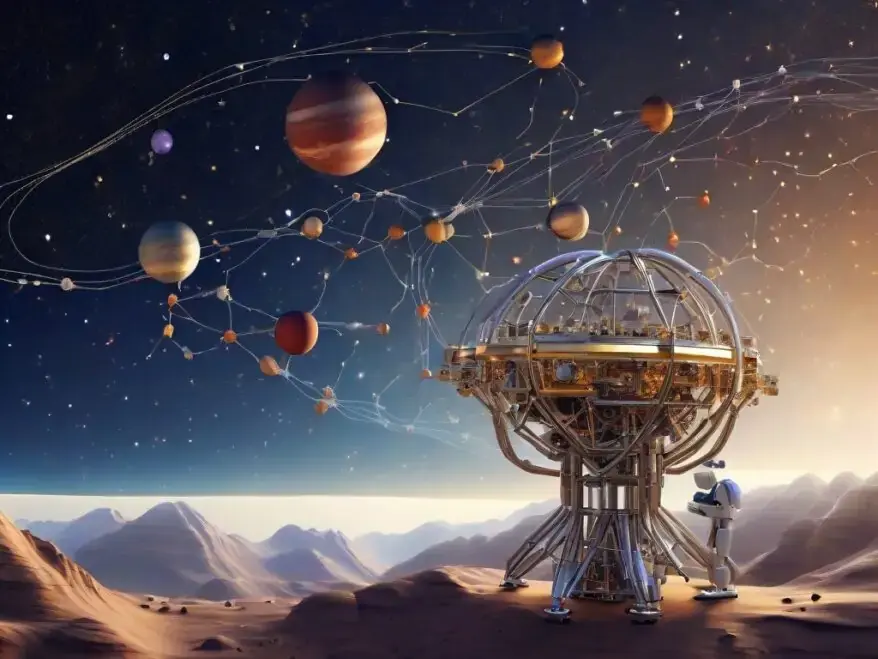
In the realm of physics, machine learning has become a valuable ally, enabling scientists to explore the universe with unprecedented precision. For instance, in the search for exoplanets—planets orbiting stars outside our solar system—machine learning algorithms sift through vast datasets, identifying potential candidates faster and more accurately.
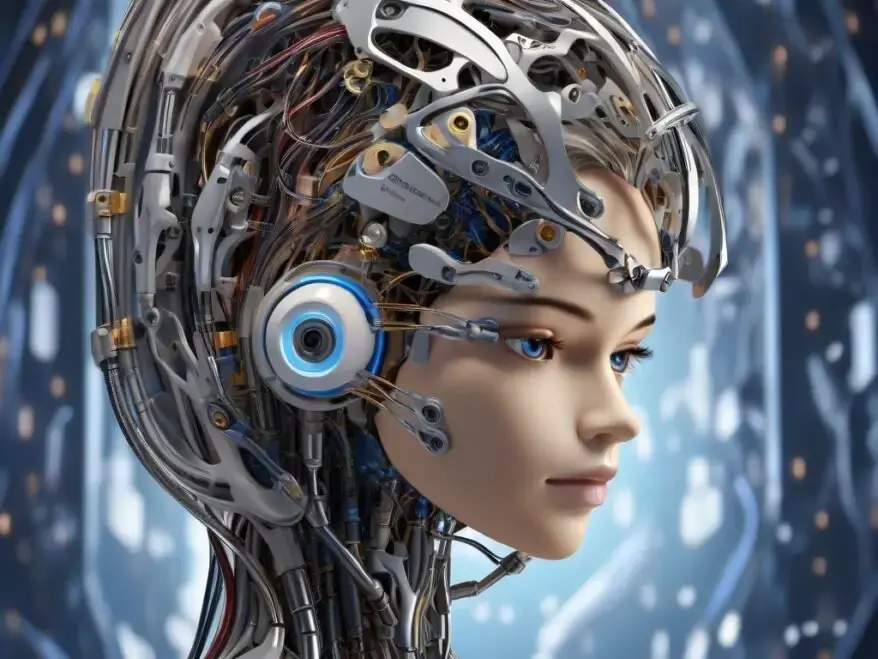
Moreover, the ethical dimensions of deploying AI systems continue to invite robust discussion. As Geoffrey Hinton underscores, ensuring the responsible development and application of AI is crucial. The potential challenges to human values must be navigated with care, as these technologies reshape society in unpredictable ways.
Neuroscience Meets Physics: A Powerful Union
The synergy between neuroscience and physics is at the heart of the breakthroughs made by John Hopfield and Geoffrey Hinton. Their research into artificial neural networks reflects a in-depth understanding of brain-like processing and its physical analogs, which is both fascinating and promising.
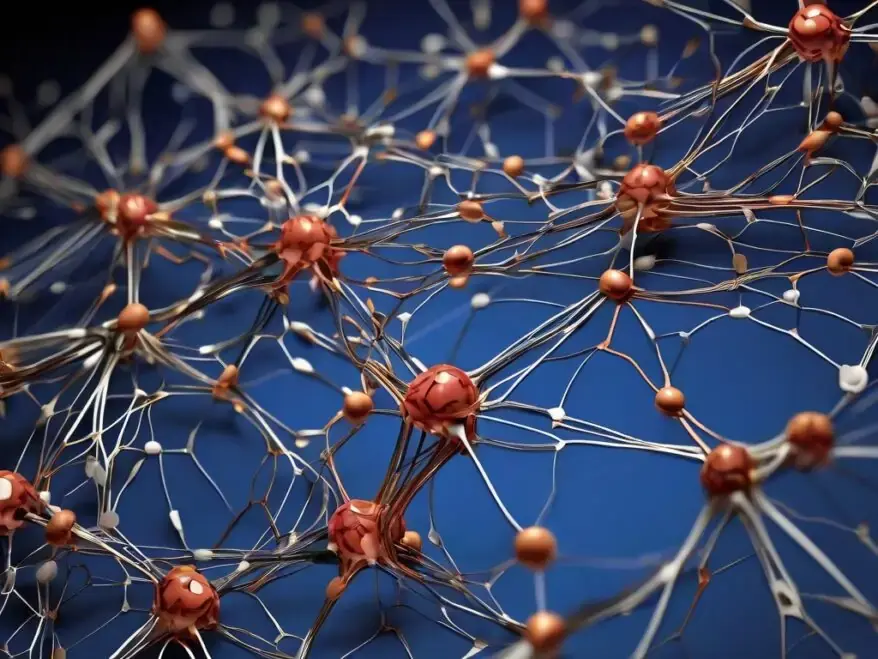
Artificial neurons in a network settle into various states akin to the atomic spins in magnetic material, a cue borrowed from physics. This analogy clarifies the mechanisms of neural computation and underscores the potential for neural networks to solve complex, multi-faceted problems.
The pursuit of understanding the brain’s workings through physics-based models offers manifold benefits, not least of which are devices and systems that mimic cognitive functions. These advancements hint at an exciting convergence of neuroscience and physics, fueling progress in both fields.
The Extraordinary Boltzmann Machine
Geoffrey Hinton‘s Boltzmann machine stands as a monumental achievement. At its essence, it is a type of neural network specifically crafted to learn and represent complex data patterns without explicit supervision. With its dual-layer structure, it processes and interprets vast amounts of information.
This innovative architecture allows the Boltzmann machine to autonomously discover features within data, making it a powerful tool for tasks such as image recognition and pattern classification.
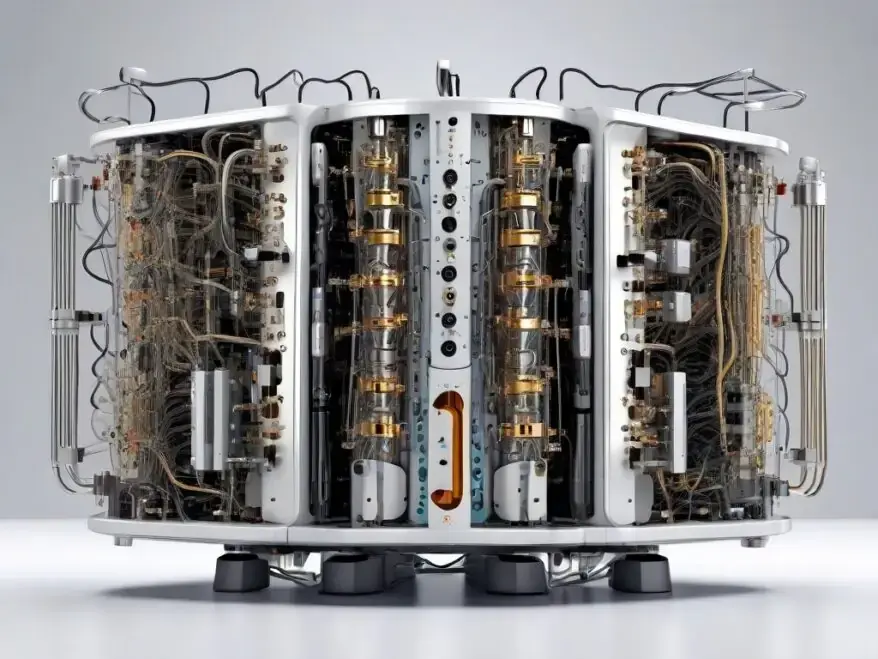
The Boltzmann machine plays a central role in the machine learning landscape today. It classifies intricate data and generates new data, building on what it ‘learns’. This capability is at the heart of technologies now central to our daily lives, from voice assistants to image recognition systems.
The conceptual leap that the Boltzmann machine made is a significant factor in the current AI renaissance, which emphasizes Hinton’s crucial role. With ongoing refinements, the significance of these networks continues to grow, heralding further profound changes.
AI: Today’s Reality and Tomorrow’s Promise
As we venture into a digital age, the achievements of Hopfield and Hinton invite us to larger reflections on artificial intelligence. Their pioneering efforts in neural network research signal promising horizons, with machine learning poised to revolutionize myriad fields. From healthcare to finance, the interoperability of AI systems is becoming critically relevant.
The unfolding of AI is as much about addressing opportunities as it is about confronting challenges. While the benefits of AI’s ascendancy are palpable, ethical considerations must align with progress. Discussions about the responsible creation and implementation of those powerful technologies are more timely and vital than ever.
In the rich story of science and innovation, visionaries like John Hopfield and Geoffrey Hinton play a key role. Their works promise to inspire new discoveries. These discoveries happen where different fields of study meet.
Machine Learning’s Role in STEM Careers
For teens captivated by the possibilities of STEM, the laureates’ stories offer motivation and guidance. The increasing integration of AI into educational curricula signals expanding avenues for young minds. Exposure to concepts in machine learning can affect both academic interests and career choices. It emphasizes the increasing need for innovative thinkers in a digital economy.
Artificial intelligence (AI) is becoming an essential part of many fields. Careers in science, technology, engineering, and mathematics (STEM) will probably change because of this shift. Jobs will focus more on making decisions based on data. The groundwork laid through early education will be crucial in manifesting these opportunities, making nurturing the next generation’s curiosity pivotal.
For students pondering futures in technology or science, a commitment to continuous learning and adaptability will be crucial. The Nobel Foundation’s recognition of emerging fields underscores the impact that innovation can have. Engaging with STEM initiatives, robotics clubs, and coding hackathons are avenues for students to explore their burgeoning interests.
Why This Nobel Prize Matters Now
The Nobel Prize in Physics 2024 doesn’t just commemorate outstanding academic achievement. Instead, it highlights a profound shift in the landscape—machine learning is becoming integral to our lives and industries. This accolade emphasizes a broader movement toward intertwining technology with traditional fields, a trend visible across various sectors.
The transformative potential of AI technologies continues to expose the ways in which interdisciplinary collaboration enhances our collective capabilities. Whether in developing sustainable technologies, exploring the boundless universe, or diagnosing diseases, the technologies born from AI research are poised to tackle the world’s pressing issues.
A New Era of Discovery
The journey of John Hopfield and Geoffrey Hinton illustrates the intersection of two worlds—neuroscience and physics—resulting in profound technological advances. As we stand on the brink of a future defined by AI, the possibilities stretch infinitely before us.
Understanding these foundations and engaging curiously with emerging technologies will shape not only careers but whole societies. The achievements of these laureates will inspire future discoveries. They will energize research paths. This inspiration invites the next generation of scientists. These new scientists will continue exploring and asking questions.
The Final Thoughts
As we celebrate the endeavors of John Hopfield and Georgeborn Hinton, we reflect on the incredible journey of machine learning, from its conceptual infancy to its realization as a transformative force. Their story is a testament to curiosity, perseverance, and the relentless pursuit of understanding—a narrative especially meaningful to teens eyeing STEM careers.
In closing, let us remain inspired by the innovations at the forefront of AI research. May the legacies of our 2024 Nobel laureates ignite an unyielding quest for knowledge, curiosity, and a willingness to push the boundaries of understanding. The world of science awaits, ripe with discoveries and innovations just over the horizon.
Did You Know?
- John Hopfield and Geoffrey Hinton’s contributions went beyond academia, directly influencing the commercial AI systems used by the biggest technology companies today, such as Google’s search algorithms and Facebook’s facial recognition software.
- The Boltzmann Machine is named after Ludwig Boltzmann, the physicist who developed statistical mechanics and the Boltzmann distribution, which heavily influenced Hinton’s models.
- Various AI-based innovations in today’s daily life, such as smart virtual assistants—like Siri and Alexa—trace their conceptual origins back to the pioneering models developed by Hopfield and Hinton.
For further reading on these fascinating subjects and a deeper dive into the intersection of physics and AI, do visit EnTech Online.
At ENTECH Online, you’ll find a wealth of information. We offer insights and resources to fuel your curiosity. Our goal is to inspire your passion for new scientific discoveries.
Disclaimer: This article/blog post is not intended to provide professional or technical or medical advice. Please consult a healthcare professional before making any changes to your diet or lifestyle. AI-generated images are used only for illustration and decoration. Their accuracy, quality, and appropriateness can differ. Users should avoid making decisions or assumptions based only on the text and images.
